11. Infinite (1996)
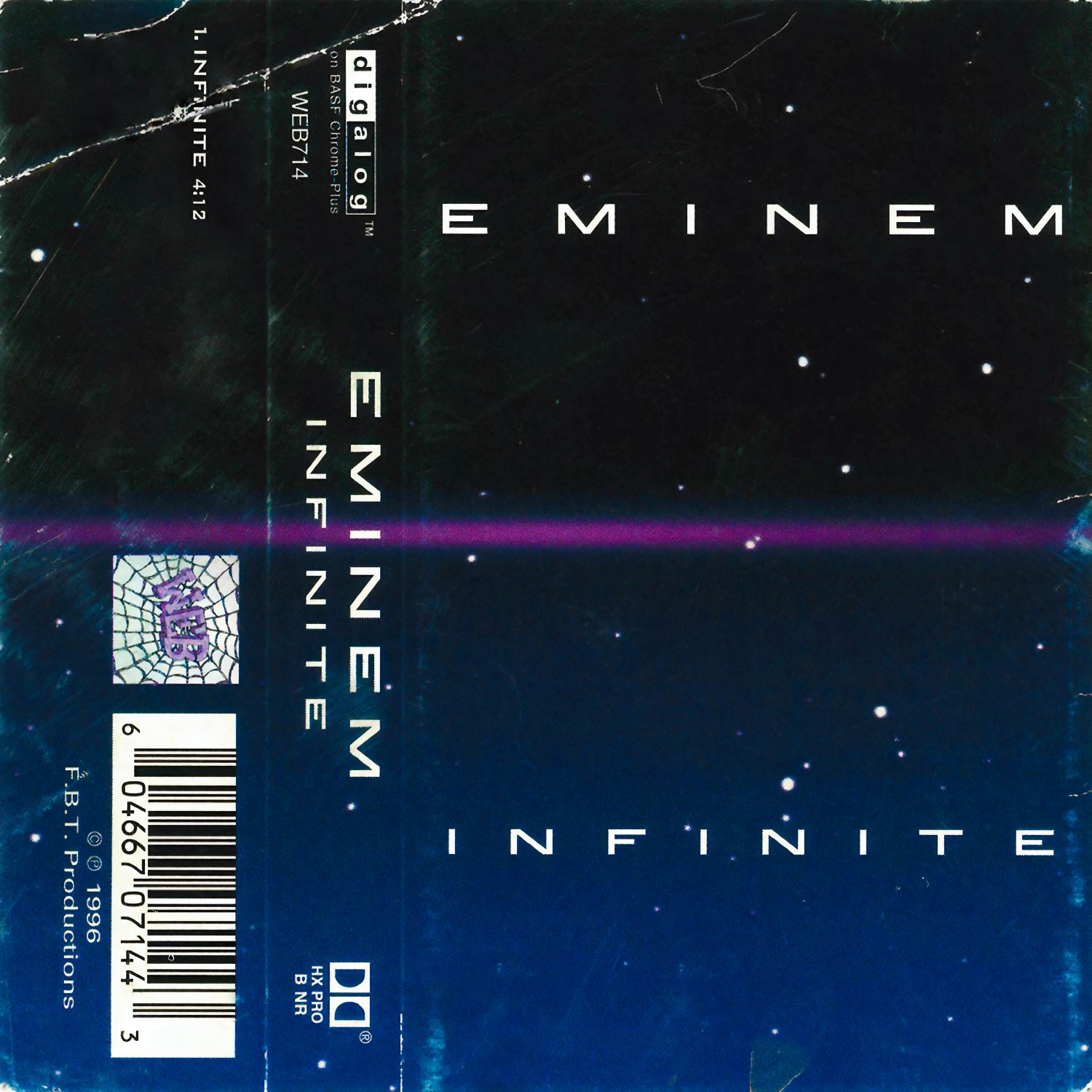
Originally released on cassette only and recorded for indie label Web Entertainment while Eminem was washing dishes for minimum wage at Gilbert’s Lodge, Infinite’s artwork is reflective of the humble rhymer’s trailer-park budget. It does establish an all-caps EMINEM font that would carry over the years—without the backwards second E.
10. Revival (2017)
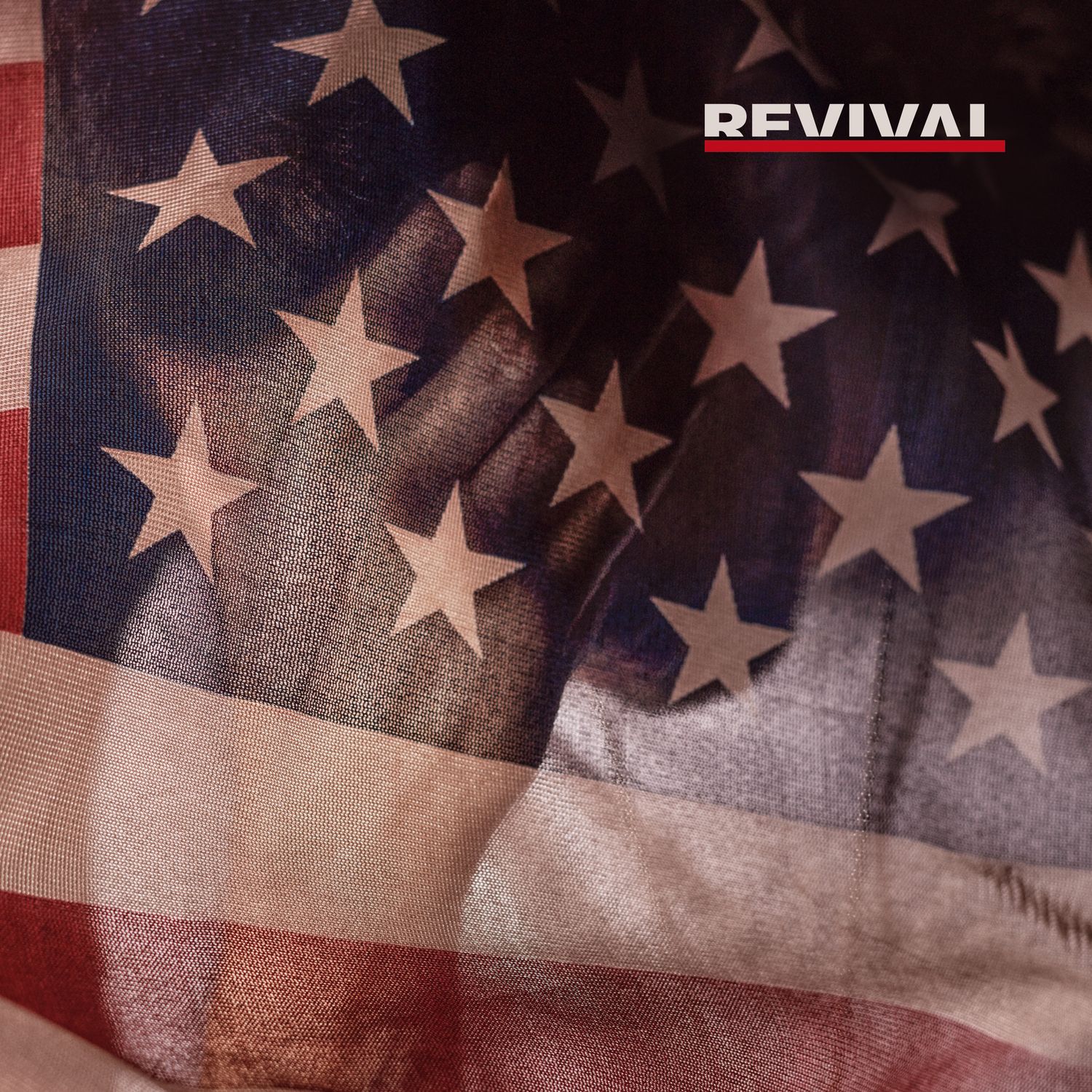
Though hardly the first time Marshall Mathers took a hard political stance (see: 2004’s “Mosh”), the Revival artwork depicts the superstar holding his head in shame behind America's stars and stripes. Disgusted over the direction Donald Trump was taking the country, Em promo’d Revival with scathing freestyles “Campaign Speech” and “The Storm”: “We love our military, and we love our country, but we f**king hate Trump!”
Related: Why Growing Up Is No Longer a Death Sentence for Rappers
9. Recovery (2010)

Taking a sharp and serious turn from his fantastical and accent-heavy Relapse project, Eminem goes stone sober for Recovery. The image of a clear-eyed, mature Marshall walking solo down a country road is reflective of a new path. "It symbolizes, like, what my life is like right now because of the fame, but also kind of how I've had to remove myself from society a little bit, pull back to conquer my demons, my addiction and that whole thing,” he said in a video posted to his website. “It also symbolizes me never leaving Detroit, you know?” Kinda boring, but the music it represents is anything but.
8. Encore (2012)
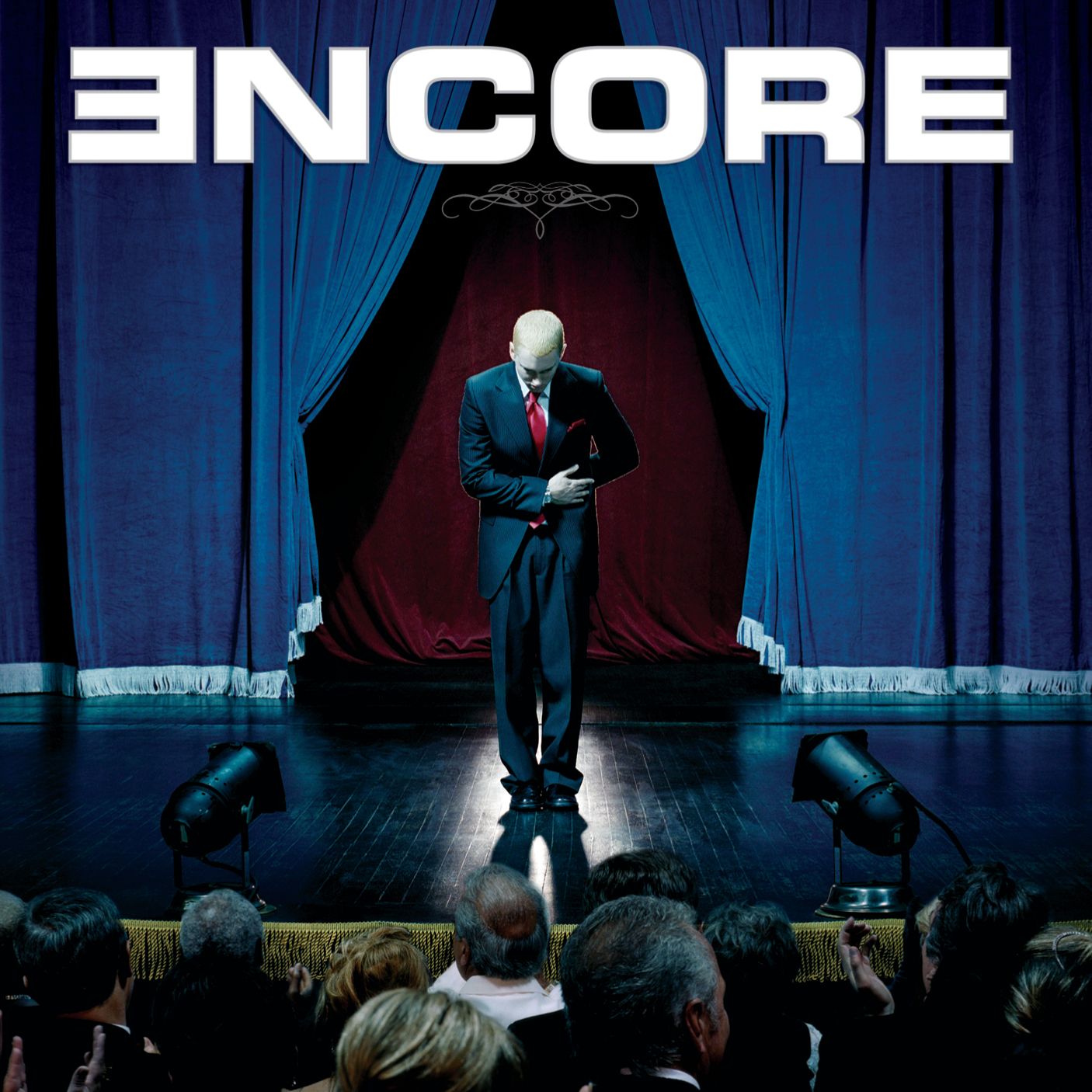
Take a bow, Eminem, for no other artist could convince 11 million people to buy an album chock full of pukes, burps, farts, Triumph the Comic Dog imitations, and an abomination of a song called “Big Weenie.” (“Like Toy Soldiers” and “Mockingbird” are cool, though.)
7. The Marshall Mathers LP 2 (2013)
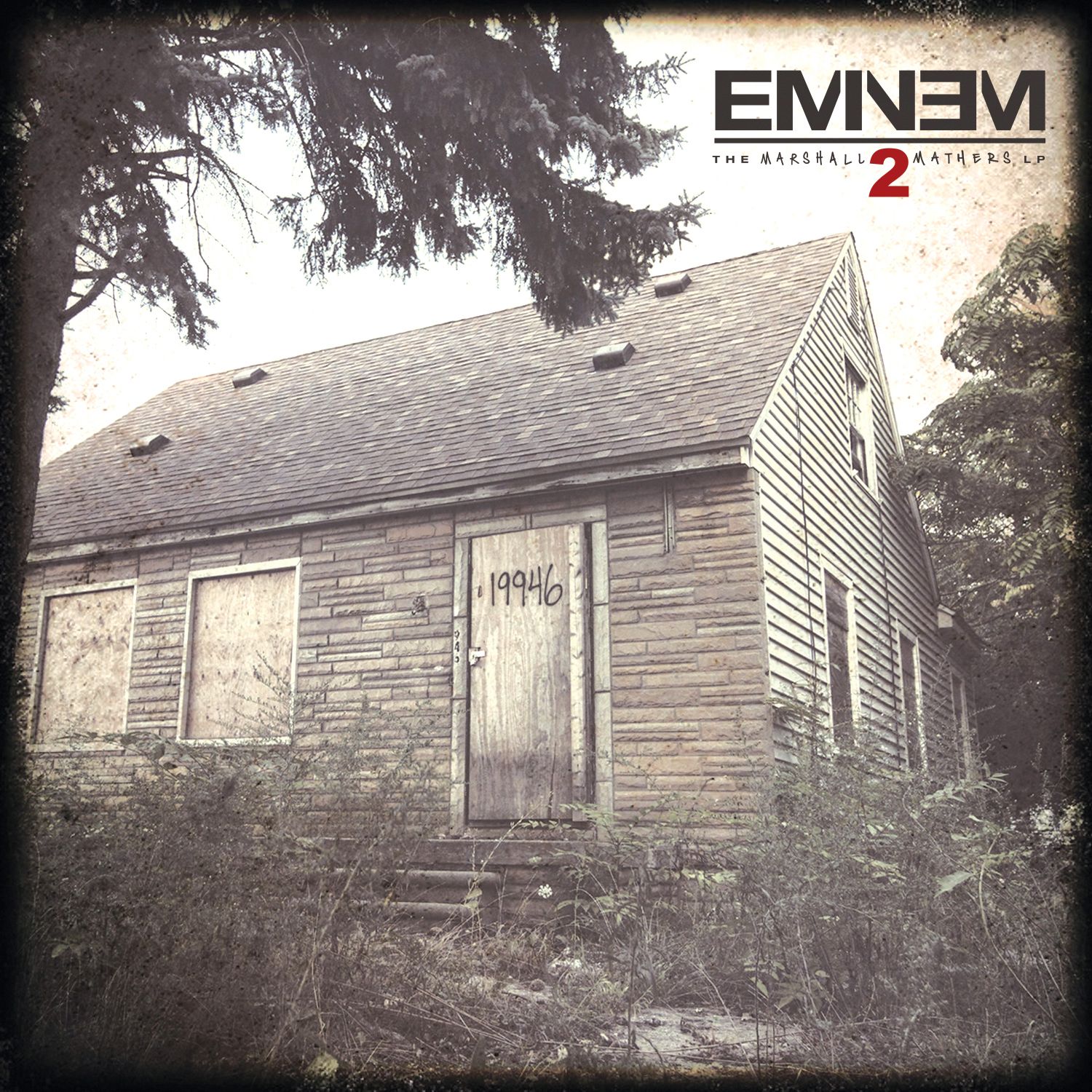
The sequel to Eminem’s best full-length LP revisits the original’s sepia tones and 8 Mile nostalgia of a simpler but more difficult time. The boarded-up house at 19946 Dresden Street in Detroit was once owned by Mathers’ mother, Deborah Nelson—it's where Em and Mr. Porter lived way back in the day.
Related: How Eminem Conquered Black Music (and White Privilege) With ‘The Marshall Mathers LP’
6. Kamikaze (2018)

An homage to 1986’s Licensed to Ill—the debut of the original irreverent white-boy rappers, Beastie Boys—Eminem’s reckless surprise follow-up to Revival came in as fast and angry as a fighter jet. (The plane’s FU-2 tag says it all.) The Beasties were caught off-guard by Kamikaze’s cover art. But, hey, all is fair when you’re rhymin’ and stealin’.
5. Music to Be Murdered By (2020)
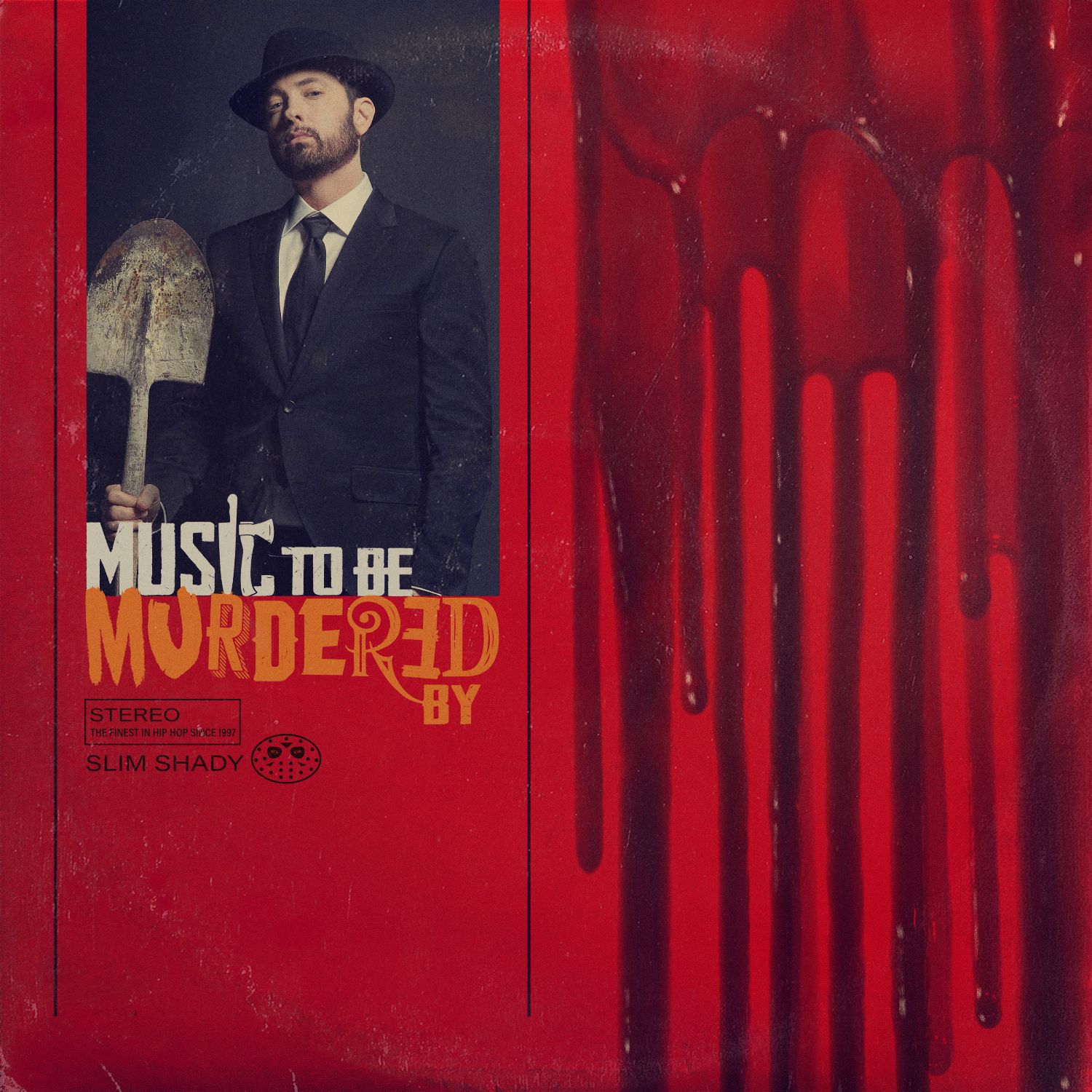
With Alfred Hitchcock providing inspiration, Mr. Mathers’ updates the cover art of the legendary horror filmmaker’s 1958 album of the same name. The psycho holding the shovel is digging graves for wack MCs and attacking the mic like a flock of angry birds.
Related: The 7 Best Hip-Hop Biopics, Ranked
4. The Eminem Show (2002)
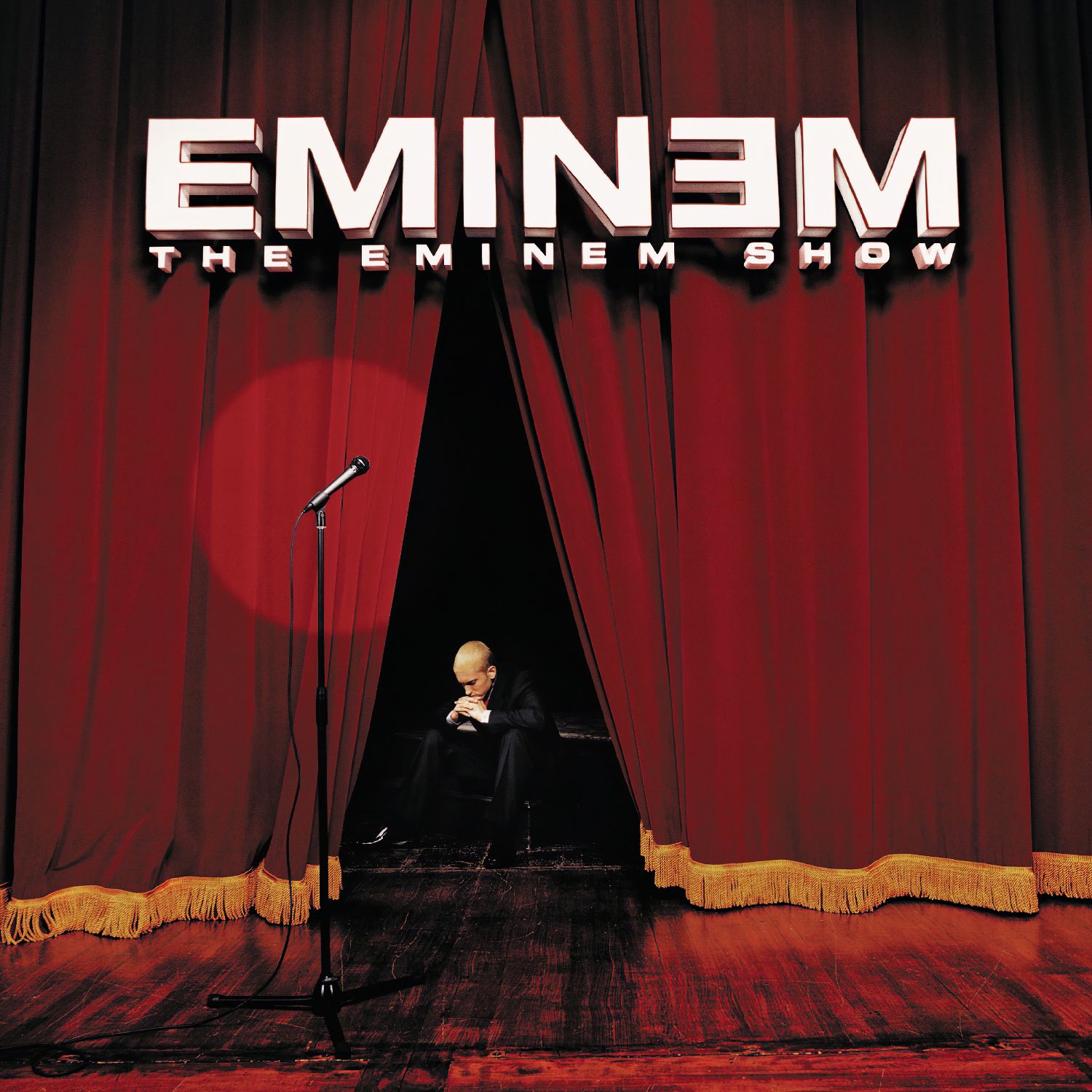
The minimalism of Eminem’s biggest-selling album perfectly encapsulates a man at the height of stardom. A spotlight blasts one mic as our controversial hero appears to be contemplating whether to keep fueling the circus around him or withdraw from a stage that has brought him riches and respect, headaches and lawsuits, all at once. It ain’t easy being the ringleader.
3. Relapse (2009)
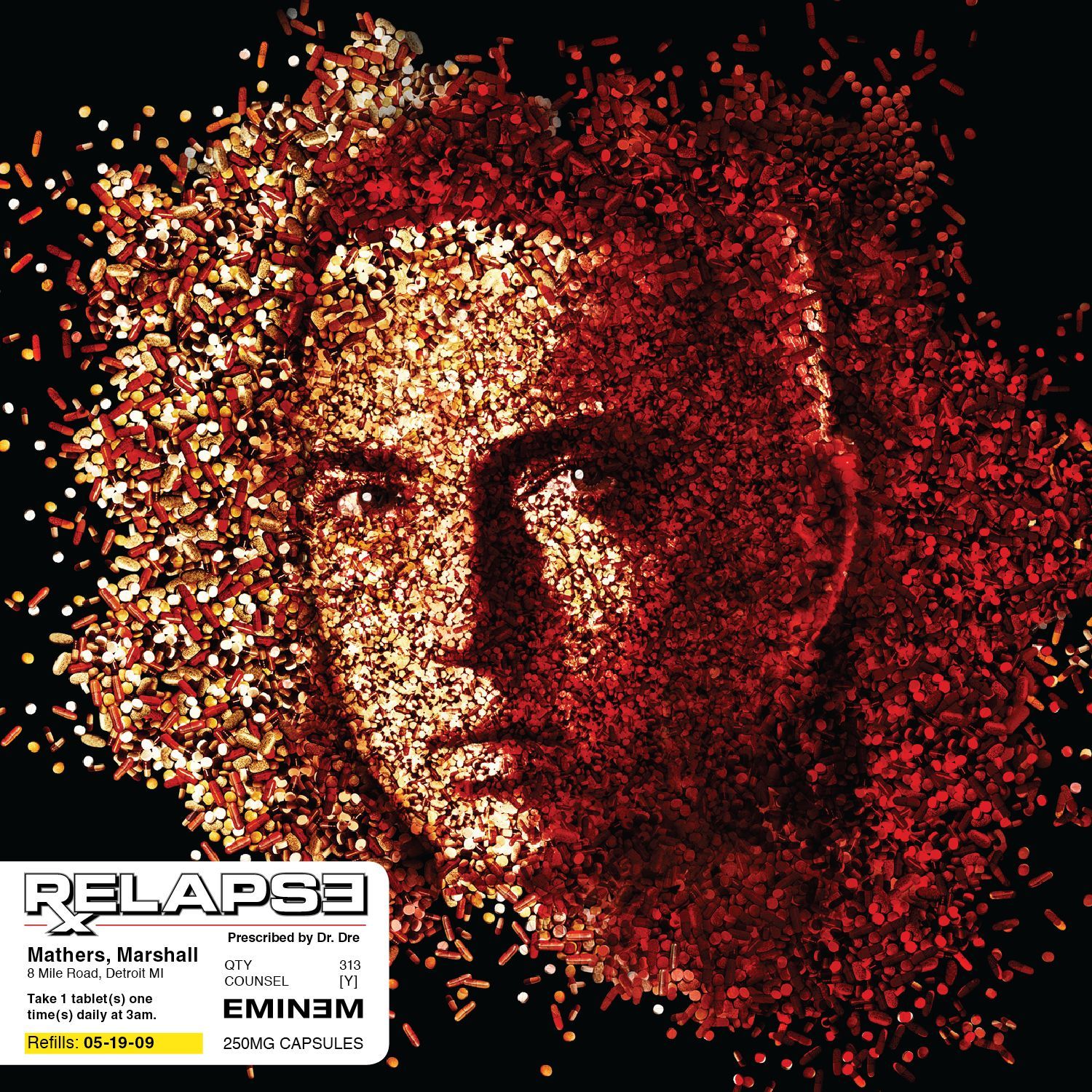
A brilliantly executed concept here. Zillions of drugstore pills (or, at his rock-bottom days, what Marshall might call breakfast) are artfully arranged to form a portrait of a man digging himself out from addiction. The details on the label—“Prescribed by Dr. Dre”—are a fine side effect.
Related: Eminem’s 8 Best Guest Verses, Ranked
2. The Slim Shady LP (1999)
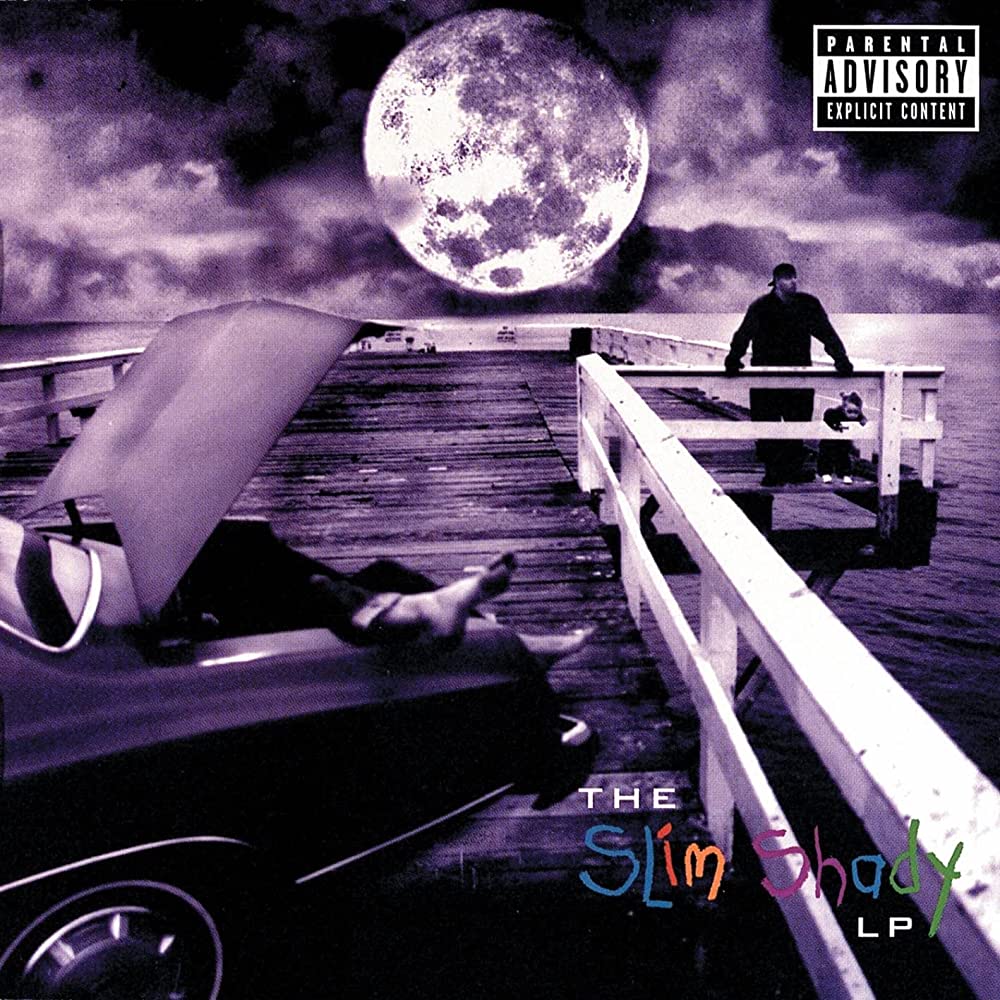
Shot and designed by Danny Hastings, the eerie full-moon cover of Eminem’s introduction to the world is an instant clue that we’re dealing with an MC unhinged. Based off his kidnapping-as-fantasy track “97 Bonnie & Clyde,” Slim Shady has his daughter’s mother’s body hanging out of the trunk, ready to ride as a single dad. As far as senses of humor go, this platinum-blond poet’s is darker than the depth of the lake he dumps bodies in.
1. The Marshall Mathers LP (2000)
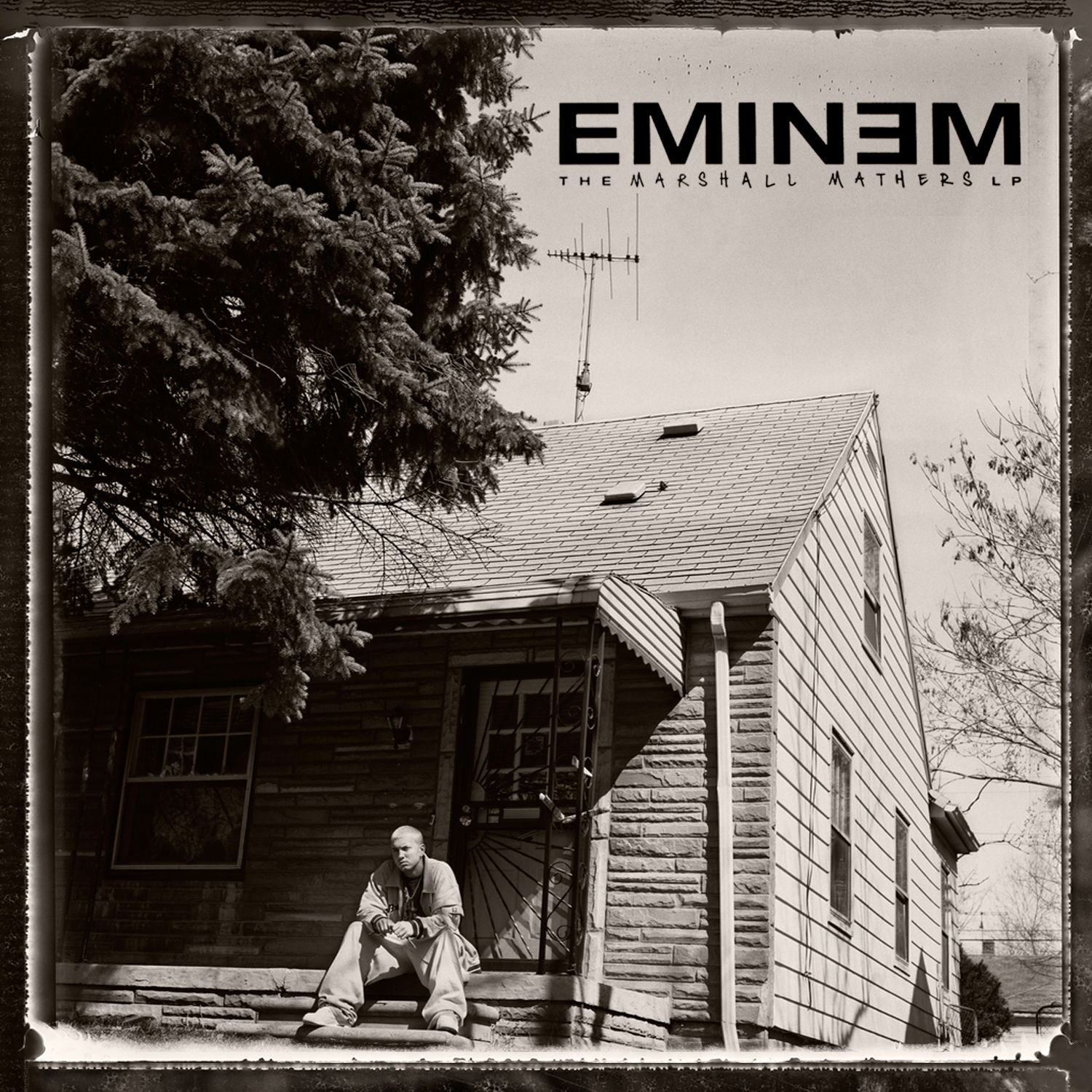
Swinging wildly from his nutty alter-ego to some writing and imagery more based in his equally horrifying personal history, Marshall Mathers returns to a boyhood home for his third LP’s cover shoot. ”I had mixed feelings because I had a lot of good and bad memories in that house,” Mathers told VH1. “But to go back to where I grew up and finally say, 'I've made it,’ is the greatest feeling in the world to me.” Real name house, no gimmicks.
